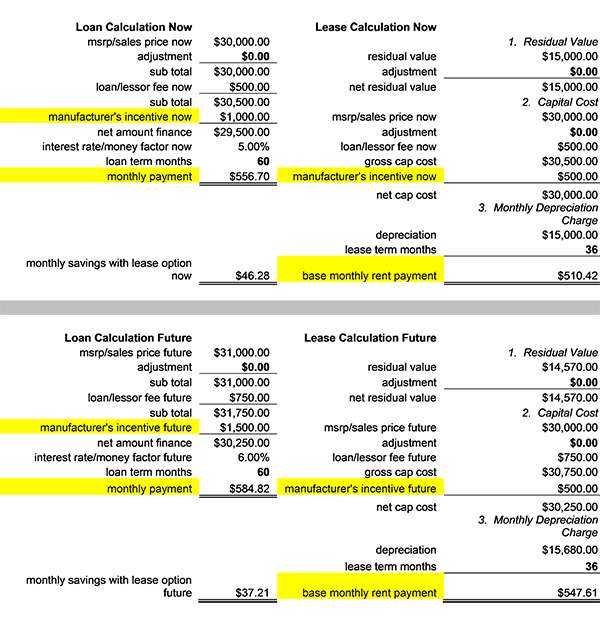CONSUMERS & DEALERS STILL PREFER LEASE DEALS DESPITE RISING INCENTIVES ON AUTO LOANS
Lease Payments Still Lower Despite Falling Residuals; Dealers & OEMs Not In Agreement
Cincinnati, OH (May 10, 2018)
Swapalease.com, the nation’s largest car lease marketplace, has new data that show lease payments would still be more attractive than loan payments even after dealers and lenders instituted more aggressive incentives toward loans. Swapalease.com conducted a loan-versus-lease comparison of the same vehicle with $30,000.00 MSRP and analyzed monthly payment options with varying residuals and incentive models.
The analysis is in response to a growing number of media reports that point to increased incentives on loans and fewer toward lease deals. However, even when these incentives are applied, monthly payments are still lower on leases, which consumers favor.
“The general perception of the industry is that growing off-lease inventory has caused used-vehicle inventory to rise, making it more costly for lenders to write leases,” said Scot Hall, Executive Vice President of Swapalease.com. “Even when these new incentives are applied, and used supply levels alter residuals, leasing remains more affordable for consumers.”
Loan & Lease Terms
In the analysis, Swapalease.com compared a 60-month loan with a 36-month lease with a deal scenario negotiated “present day” that includes a lease residual of 50%, and a scenario negotiated “future” with a lease residual of 47%. This presents two scenarios that can show how rising used supply and lower residuals may impact higher lease payments in the future.
Loan & Lease Incentives
Swapalease.com also implemented a $1,000.00 incentive on the today loan against a $500.00 incentive on a today lease (50% residual). The analysis then upped the loan incentive to $1,500.00 on a tomorrow loan but kept the lease incentive at just $500.00 on tomorrow’s deal (47% residual) for further stress testing.

Dealers & OEM/Lenders Not on the Same Page
A handful of carmakers said in 2017 they plan to reduce the lease output in order to reduce exposure to future losses on residual values. Ford Credit said in an Automotive News article in late 2017 its lease activity represented 22% of U.S. retail volume in the second quarter of 2017, down from 23% a year earlier.
A reduction in lease activity may hamper the dealer’s ability to move more inventory. According to dealers in an online Swapalease.com survey in November, 2017, 68% said they would rather use incentives on leases, which may lower residuals over time, but still give them a chance to move more inventory every 3-4 years. Conversely, only 32% of dealers said they’d rather use incentives on financing to preserve residuals on vehicles, even if it means the customer sales cycle slows to 5-8 years when auto loans mature or expire.